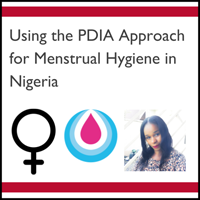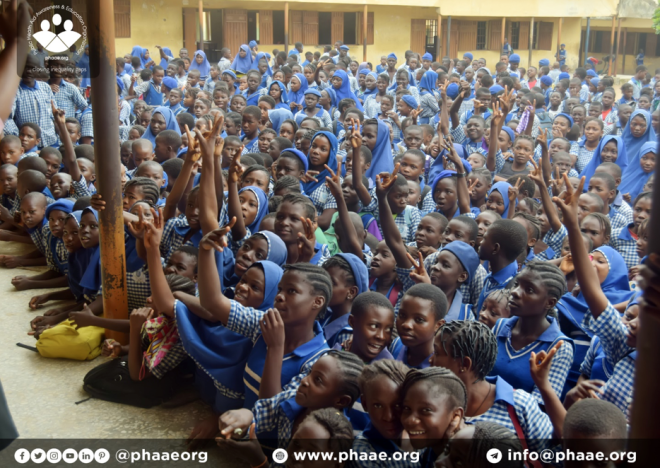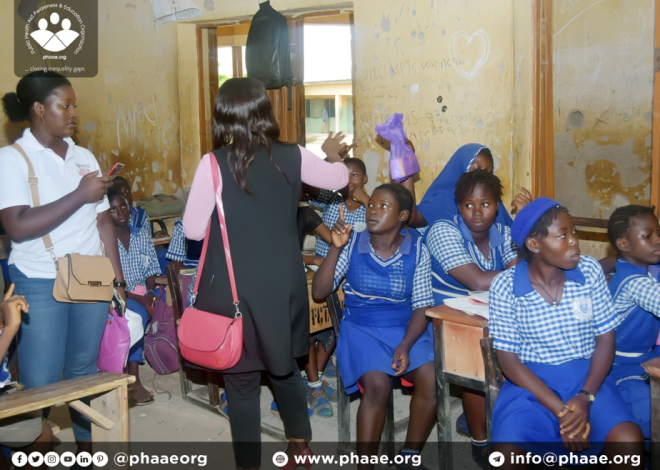Using the PDIA Approach for Menstrual Hygiene in Nigeria


This blog was originally posted on the Building State Capability blog.
There have been a lot of problems and misconceptions surrounding menstruation in developing countries, including in Nigeria. Menstrual hygiene management has become an area of concern in recent age especially in rural areas where access to appropriate facilities is hindered by a combination of infrastructural limitations and social norms surrounding the health of women and adolescent girls.
This is described in a recent study by the Public Health Aid Awareness & Education (PHAAE) Organization as an “era of new puberty”, where an increasing number of girls starts to develop their sexuality at an early age of 7 or 8. This is a sharp contrast to the 1960s, where only 1% of girls would enter puberty before their 9th birthday.

In tackling this issue, PHAAE adopted the Problem Driven Iterative Adaptation (PDIA) in order not to be mired by the “big stuck” or “capability trap” where developing countries and organizations thereof are stuck doing the same thing year after year that doesn’t improve, help the situation or produce results. Even when everyone can agree in broad terms that menstrual hygiene management amongst adolescent girls and women in marginalized areas is very poor as a result of lack of modern facilities, an inability to actually implement a strategy that addresses this means there is little or nothing to show for this realization despite the time, money and effort (if any).
This explains how low capability exists around this subject on menstrual hygiene management. The first thing we did was to adopt a strategy that constructs and deconstructs the problem using the Ishikawa diagram, also known as a fishbone diagram. In this diagram we noted the cause and effect of this situation by defining the problem statement and then considering the health and environmental implications, bearing in mind the social norms, processes and policies that exist or have been implemented (if any). This also includes laws and solutions that have been adopted again and again, hoping for a different outcome but never producing one. Our major aim was to get “unstuck” from the root, the lack of basic sanitation facilities and hygiene behavior for menstruating females in marginalized areas. First we launched a hygiene promotion program amongst the school girls in a bid to be inclusive and produce sustainable results. This we did in partnership with medical personnel who were on ground to educate the girls on the medical implications of poor hygiene behavior during menstruation.
With the help of the Ishikawa diagram, we were able to construct the problem and aim our interventions at making an impact and producing solutions and not a case of Isomorphic Mimicry – where it looks good but will not be the solution. The comprehensive hygiene education had participating girls and boys recognize that the dominating perception in Nigeria on menstruation was incorrect: that menstruation was unclean, dirty, shameful and should be treated with secrecy and as an embarrassment. These perceptions are confirmed as a result of social norms and behaviors around period management.
Our primary authorizer for this intervention was our team, comprising of all the partners from Women Environmental Programme, Medical Professionals, volunteers, etc. The value of a strong team and the reason why we succeeded is that the communication channel amongst the team was alive. Together we evaluated the stakeholders and authorities and decided on the key group for this intervention; we needed the local authorities, the teachers, parents, physicians, youth leaders, school prefects to fight this pervasive taboo.
The advocacy team from PHAAE, in collaboration with Women Environmental Programme and WSSCC, visited Junior Secondary School GwaGwad, situated at the outskirts in one of the marginalized communities in Abuja, Nigeria. There, we thoroughly educated over 2,000 students to a very interactive and educative session on menstrual hygiene management. There were about 1,500-1,700 girls between the ages of 8-15 and 700-1,000 boys between the ages of 9-16.

It is important to note that the grave lack of sanitation facilities and sanitary products has pushed menstruating girls out of school temporarily and even permanently. In lieu of this, PHAAE proposed and advocated to National Authorities (i.e. the government, federal ministry of health, national human rights commission, law makers) to initiate policies that ensure that girls and women have separate and private toilet facilities with running water in their schools and even at workplaces. And in addition, access to essential sanitary products such as sanitary pads should come as normal school supplies by the government, through the Federal Ministry of Education. Most importantly, national, community and religious leaders must speak out to change attitudes, traditions and customs that restrain the menstruating woman or girl from coming to places of worship during their period.
PHAAE adapted the PDIA approach of identifying the major problem in this context and also identifying the key players who deviate from what has not worked in the past to try something new and also reinforce that which have worked. In the end, inequality gaps surrounding access to resources and facilities will be closed for good.

ABOUT THE AUTHOR

Uchechi Okonmah is a WASH specialist and passionate founder of PHAAE, a non profit organization headquartered at Abuja Nigeria, which focuses on closing inequality gaps around issues on water, sanitation and hygiene as it affects women, adolescent girls and children. She is a WASH expert with over 6 years’ experience.




Thank you for sharing this experience!
Thanks alot Luis